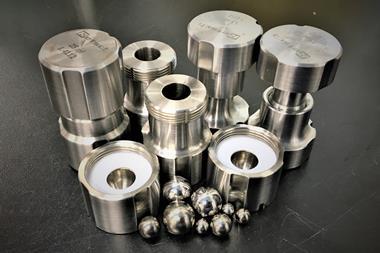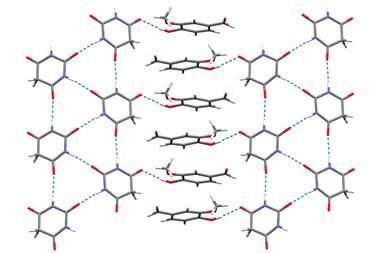Soundwaves can be used to make several metal-organic frameworks (MOFs), new research shows. The technique is simple to scale up and combines the environmental benefits of mechanochemistry, whilst avoiding grinding processes that can contaminate the final product.
‘There is a big problem in how chemistry makes things. We want to find ways of doing chemistry without creating toxic solvent waste,’ says Tomislav Friščić from McGill University in Canada. Mechanochemistry, the process of synthesising chemical products using mechanical action, has gained attention as a way of doing just that. Friščić’s team has gone a step further by also removing the need for so-called grinding media – the tiny balls or pellets used to grind the molecules together.
Traditional mechanochemical methods, like ball milling, can cause contamination – a particular problem for products that rely on their purity, like pharamaceuticals. Contamination happens when balls and the lining of the mill itself, which are often ceramic or metal, wear down and are incorporated in the final product. Grinding-based methods can also generate amorphous products. Friščić’s team, however, is using a new method that is gentle enough to avoid these problems.

The method, liquid-assisted resonant acoustic mixing, uses a minimal amount of solvent and sound waves to shake the particles together. And it creates MOFs with no discernible difference to those made by traditional synthetic methods. Sonochemistry, using sonic wave frequencies to synthesise materials, is fairly well established. In fact, the researchers used a commercially available instrument to make their MOFs. The technique had previously been used to make co-crystals or in organic condensation reactions; this is the first time that scientists have synthesised MOFs synthesised in this way.
The researchers also demonstrated the synthetic freedoms of the method by varying the complexity of the target MOFs. They even managed to make one MOF, ZIF-L, which had never been made mechanochemically before. ‘I’m really excited about how we could potentially use this acoustic mixing to make very sensitive MOFs, with very high porosity and extremely low density frameworks, which are difficult to make chemically,’ says Friščić.
‘We want these chemical processes to be not only interesting to us in the lab, but also to be immediately valuable to companies and manufacturers,’ Friščić explains. The group worked in collaboration with industrialist Karthik Nagapudi from Genentech and scaled up the process from a few milligrams to over 25g, indicating its potential for real world applications and industrial manufacturing. ‘I think one way that chemists can contribute to making the world a better place is by changing how chemistry is done on a very large scale,’ Friščić adds.
Deborah Crawford, an expert in mechanochemistry and sonochemistry from the University of Bradford, UK, comments that she is particularly interested in understanding the mechanisms by which the reactions are taking place. ‘We know how solvent-based sonochemistry works, but we don’t know mechanistically how it works in the solid state, especially on these larger scales. This is a new area that we thought we understood but we no longer do.’












No comments yet